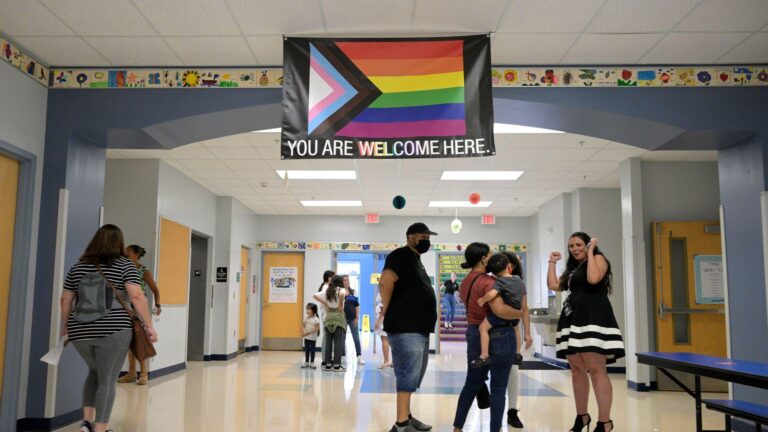Washington State Advances LGBTQ+ Inclusive Education: A New Chapter in School Curricula
Washington’s Commitment to LGBTQ+ Inclusive Learning
Washington has recently joined a progressive wave by becoming the seventh U.S. state to require LGBTQ+-inclusive content in its public school curricula. This landmark legislation is designed to integrate the stories, achievements, and lived experiences of LGBTQ+ individuals into educational programs, fostering a culture of respect and inclusivity from early schooling years. The initiative reflects a broader national momentum aimed at enriching educational environments to better support LGBTQ+ students and cultivate empathy among all learners.
By embedding LGBTQ+ topics across various subjects, Washington’s policy ensures that students gain a comprehensive understanding of diverse identities and histories. Key elements of the law include:
- Incorporation of LGBTQ+ historical figures and narratives throughout grade levels.
- Mandatory professional development for educators to competently teach inclusive material.
- Representation of diverse family dynamics in textbooks and classroom discussions.
- Regular evaluation of curriculum effectiveness to maintain inclusivity standards.
| State | Year Implemented | Curriculum Focus |
|---|---|---|
| California | 2011 | History and Social Studies |
| Oregon | 2015 | Comprehensive K-12 Curriculum |
| Washington | 2024 | Statewide Inclusive Education |
Positive Outcomes of LGBTQ+ Inclusive Curricula on Student Health and Social Dynamics
Research consistently demonstrates that LGBTQ+-inclusive education significantly benefits student wellbeing, especially for LGBTQ+ youth. Schools that embrace diverse sexual orientations and gender identities within their teaching materials create safer, more affirming environments. This inclusivity correlates with a marked decrease in bullying incidents and improvements in mental health indicators such as reduced anxiety and depression rates. Moreover, inclusive curricula nurture empathy and social resilience among all students, fostering a school culture where diversity is respected and celebrated.
Educators and school leaders report noticeable improvements in peer relationships and overall school climate following the adoption of inclusive content. The advantages can be summarized as:
- Enhanced Awareness: Students gain insight into the historical and cultural contributions of LGBTQ+ communities.
- Stronger Peer Respect: Inclusive education reduces stereotypes and promotes mutual understanding.
- Better Mental Health: Affirming environments support emotional wellbeing and reduce stigma.
- Increased Engagement: Representation in curricula boosts student motivation and participation.
| Metric | Pre-Inclusion | Post-Inclusion |
|---|---|---|
| Bullying Reports | 35% | 18% |
| Student Wellbeing Scores* | 62% | 85% |
| Acceptance of LGBTQ+ Peers | 40% | 78% |
*Based on standardized wellbeing assessments
Obstacles and Resistance to LGBTQ+ Inclusive Education
Despite the clear benefits, the rollout of LGBTQ+-inclusive curricula often encounters significant opposition. Resistance typically stems from political, religious, and cultural groups concerned about parental authority, perceived threats to traditional values, or misconceptions about the content’s appropriateness. These challenges manifest in legislative pushbacks, school board disputes, and community protests, sometimes resulting in delayed implementation, diluted policies, or outright bans in certain regions.
Schools also face practical hurdles such as insufficient teacher training and limited resources, which can impede the effective delivery of inclusive education. Additionally, the social environment during curriculum transitions may expose LGBTQ+ students to increased risks of harassment or exclusion. The following table outlines common challenges alongside strategies that have proven effective in overcoming them:
| Challenge | Examples | Effective Responses |
|---|---|---|
| Political Opposition | Legislative amendments, school board protests | Coalition-building with local advocates, transparent public discussions |
| Insufficient Training | Educators unprepared to teach LGBTQ+ topics | Professional development workshops, expert-led seminars |
| Community Pushback | Parent petitions, misinformation campaigns | Inclusive communication, parental engagement programs |
| Student Safety Concerns | Bullying and discrimination incidents | Anti-bullying policies, establishment of safe spaces |
Best Practices for Schools Implementing LGBTQ+ Inclusive Curricula
For schools adopting LGBTQ+ inclusive education, fostering a welcoming and respectful atmosphere is paramount. Educators should pursue ongoing training to accurately and sensitively represent LGBTQ+ histories and identities, ensuring content is authentic and free from stereotypes. Partnering with LGBTQ+ advocacy groups can enrich curriculum development by incorporating real-world perspectives and experiences.
Transparent communication with students, families, and staff is essential to address concerns and highlight the educational advantages of inclusivity. Curricula should be intersectional, reflecting the diversity within LGBTQ+ communities across race, ethnicity, and culture. The following strategies can facilitate a successful transition:
- Guidelines for Inclusive Language: Promote respectful communication among students and staff.
- Feedback Mechanisms: Use surveys and forums to assess curriculum impact and gather input.
- Support Networks: Establish LGBTQ+ student groups and counseling services.
- Cross-Disciplinary Integration: Embed LGBTQ+ topics throughout various subjects rather than isolating them.
| Recommendation | Objective | Example |
|---|---|---|
| Diverse Educational Materials | Expand perspectives and reduce bias | Inclusion of works by LGBTQ+ authors in literature classes |
| Ongoing Staff Training | Improve cultural competence | Quarterly sensitivity and inclusivity workshops |
| Safe and Supportive Spaces | Enhance student wellbeing | LGBTQ+ clubs and accessible counseling services |
Final Thoughts: Washington’s Role in Shaping Inclusive Education
Washington’s enactment of LGBTQ+-inclusive curriculum requirements marks a pivotal advancement in educational equity and diversity. While the policy has sparked debate, it underscores a growing recognition of the importance of representing LGBTQ+ experiences in schools nationwide. This progressive step not only supports LGBTQ+ students but also enriches the educational experience for all learners by promoting acceptance, understanding, and respect. As more states consider similar measures, Washington’s leadership highlights the evolving landscape of how identity and history are taught in American classrooms.







